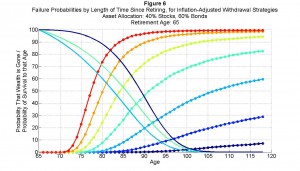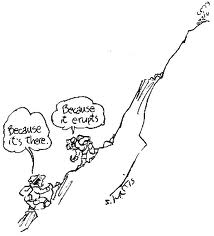My good blogging friend, Kevin, mounts a good case for – naturally – taking on blogging as a side business.
Because I don’t monetize my blog at all, nor do I expend any effort on promoting it or driving traffic to it, I can’t really comment.
But, I can say that for my audience it’s probably not the right type of business for you.
Well, let’s backtrack a little; as I once said: “you can’t save your way to wealth“!
So, the only reason for starting a side business is so that you can build up an investing war-chest to use elsewhere.
[AJC: another perfectly valid reason might be so that you can grow it to one day replace your day job. Another reason might be to gain experience in business. All valid reasons, but not directly in the context of getting you to $7m7y]
If you do that, then you’re essentially beefing up your Pay It Twice strategy, so I have little more to add here.
But, if you do want to reach $7m7y (or some other large number / soon date), then I do have the perfect side-business for you:
If you are a programmer, go find a friend with some online marketing experience (here’s where a blogger can come in real handy!) … if you’re a fellow blogger, go find a great programmer who also likes to burn the midnight oil.
Then go and build your own startup!
If you come up with a cool idea aimed at small businesses or the self-employed, then you can build up a neat revenue stream and end up with something quite salable.
Just like the guy/s at Freckle (an online time accounting tool) who took their site from $1k/mth revenue to $20k/mth in just two years.
Firstly: SaaS (Software as a service, which just means tools that run online without needing to download software) companies typically operate on high gross margins (70% – 90%) and ‘in the cloud’ (which means that they don’t need to run or maintain their own hardware or operating systems) using ‘open source’ software (which usually means they’re free).
This means the owners make good income, with few (if any) fixed overheads, be it full-time or part-time.
Secondly: Unlike blogs, eBay businesses and many other types of online/offline ‘side businesses’, these types of internet businesses can scale; that means the sky’s the limit as to how much income they can generate.
Thirdly: They can be financed (by angel investors and, later, venture capitalists) for expansion.
Lastly: They can be sold … for a lot!
Just ask the guys who are financing Airbnb (started by just three regular guys) or Groupon what they think those businesses are worth 😉
[AJC: actually, these are not examples of SaaS businesses, but they also generate revenue, so there’s nothing wrong with going down that path, either, but you really need to be lucky to find the right ‘slam dunk’ niche]
Now, you may not be as successful as any of these guys …
… but, I submit to you, that you are just as likely to be successful in a true / salable online business as you are in any other kind of part-time business (including blogging) and that it takes just as much work.
So, why wouldn’t you try the one that has a chance of getting you to your – shall we say, audacious – financial goal?












